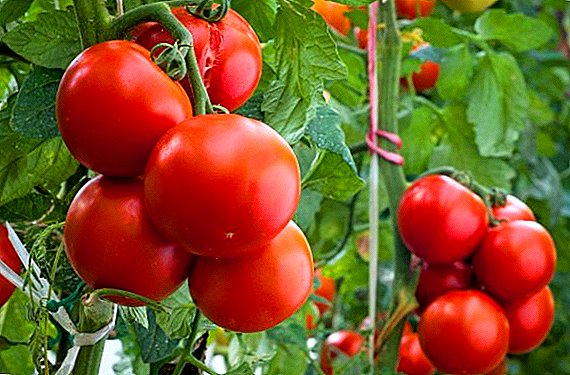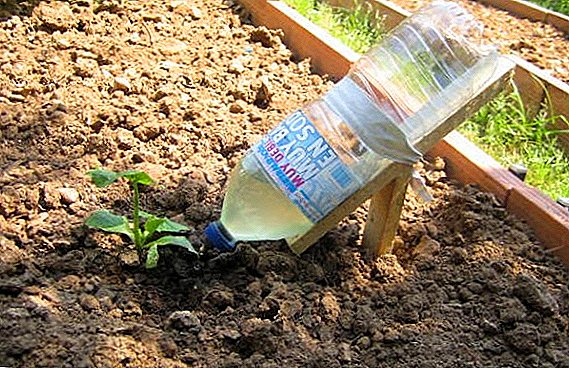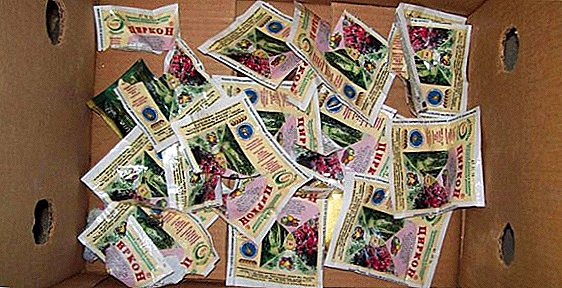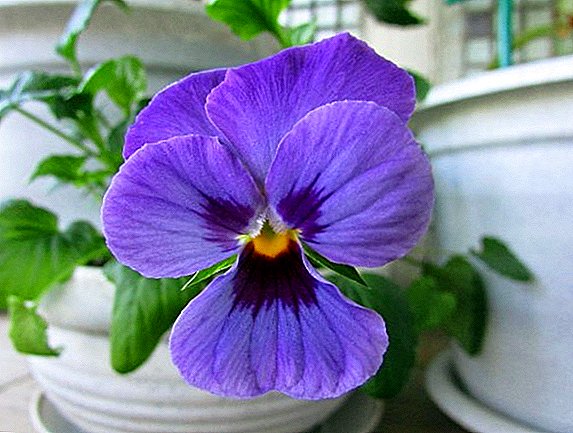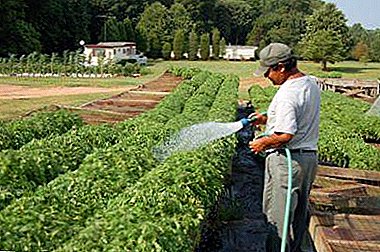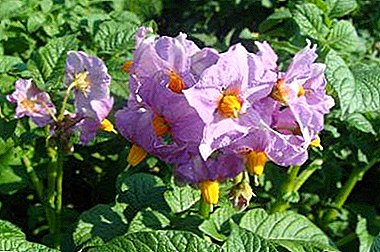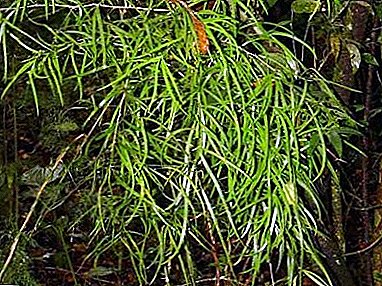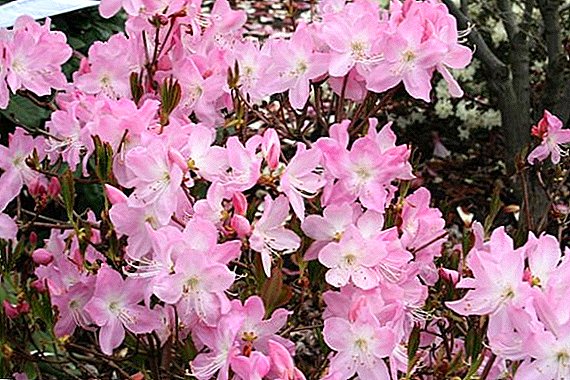 Rhododendrons are deservedly considered one of the most beautiful plants that decorate gardens and greenhouses. There are many species, they can be evergreen or deciduous shrubs and even small trees. We will tell about one of the species, namely about the Schlippenbach rhododendron, which is distinguished by its resistance to cold and beautiful flowering.
Rhododendrons are deservedly considered one of the most beautiful plants that decorate gardens and greenhouses. There are many species, they can be evergreen or deciduous shrubs and even small trees. We will tell about one of the species, namely about the Schlippenbach rhododendron, which is distinguished by its resistance to cold and beautiful flowering.
Description
This species belongs to the genus rhododendron (lat. Rhododéndron) and the heather family. The plant is a deciduous shrub. Named after A. Shlippenbach, a Russian naval officer who first collected plant samples in 1854, during an expedition on the frigate Pallas. Under natural conditions, the shrub is found on the Korean Peninsula, in the North-East of China, and also in the south of the Primorsky Territory of Russia.
Did you know? Code in 401 BC a detachment of the ancient Greek commander Xenophon crossed the Caucasus Mountains, covered at that time with rhododendron thickets, his soldiers ate honey from wild bees, as a result of which they fell into a state of intoxication, weakened and came to their senses only a few days later. The reason for this was the substance andromedotoxin contained in some types of rhododendron.
 Externally, the plant is a spreading shrub up to two meters, the leaves of which are collected at the tips of the shoots. The leaves themselves are ovate, dark green in color, with a slightly wavy edge. Flowers with a pleasant smell, collected in inflorescences. They are pale pink, dotted with purple spots near the center, the diameter of the flowers reaches 8 cm.
Externally, the plant is a spreading shrub up to two meters, the leaves of which are collected at the tips of the shoots. The leaves themselves are ovate, dark green in color, with a slightly wavy edge. Flowers with a pleasant smell, collected in inflorescences. They are pale pink, dotted with purple spots near the center, the diameter of the flowers reaches 8 cm.Flowering plant begins at the age of 6-8 years. The fruit is a box of seeds. In general, this species is considered one of the most beautiful representatives of the genus rhododendrons. He can live up to 40 years.
Choosing a place
The most preferred for this shrub are slightly acidic well-drained soil. The place for planting should be shaded, in the open area of the sun the plant may not bloom. Although the bush loves moisture, it should not be planted in waterlogged places.
Important! The development of rhododendron Schlippenbach is adversely affected by the proximity to such trees as apples, pears, willows, maples, birches, oaks and in general everyone with a superficial root system.

Landing rules
For planting this plant is used as purchased seedlings and seeds. If a seedling is planted, then a hole 60 cm deep and 70 cm in diameter is prepared for it. A mixture of peat and compost is added to it in a ratio of 3: 1, the seedling is sunk to the level of the root collar. Top saw layers of sawdust. The best time for such a landing is considered to be spring, April-May, depending on the climate.
Learn about the species diversity of rhododendrons, winter-hardy varieties of rhododendrons.The method of planting seeds is practiced more often, as the plants obtained in this way, quickly adapt to external conditions. It is better to sow seeds in February, then they can be planted in open ground in spring. At the same time, it is necessary to strictly adhere to the landing technology consisting of the following steps:
- A substrate is prepared for planting, for which peat, sand, coniferous soil (this is land taken in coniferous forest) and humus are mixed in equal proportions. The mixture is poured into a container and disinfected.
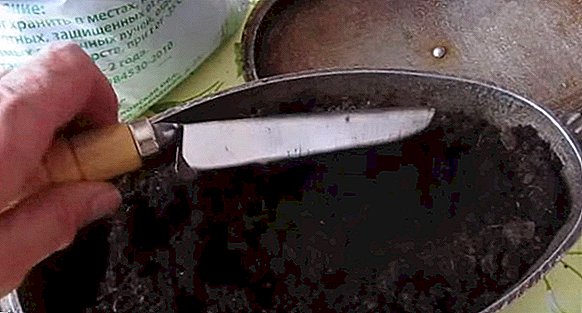
- Seeds are soaked in warm soft water (you can use rainwater) and leave in a well-lit place for 3-4 days.
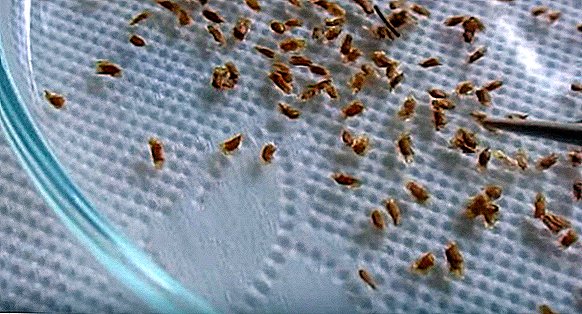
- The prepared seeds are sown in a container with a moistened substrate on its surface, without digging them down. Container cover with foil. The optimum air temperature in the room is approximately +25 ° C.
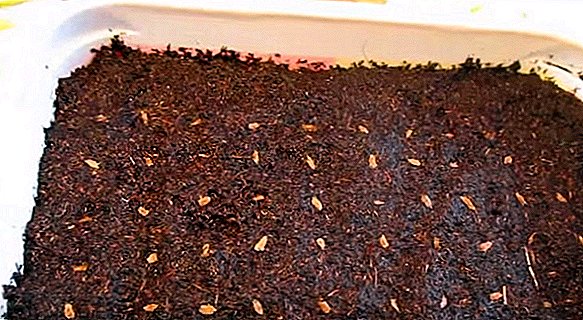
- After germination, the container is moved to a cool room. The optimum temperature in it is from +10 ° C to +12 ° C, drafts are unacceptable. Seedlings periodically watered, maintaining the soil in a slightly moist state. Watering is done very carefully, so as not to damage the sprouts. They should be illuminated for at least 12 hours; if there is not enough light, use artificial lighting.

- With the appearance of 2-3 leaves of the plant dive into pots with the same soil.

- When the air temperature reaches +5 ° C, the plants are taken out to the open air daily for hardening. Begin with a 15-minute stay in such conditions, gradually increasing this time.
- Plants are transplanted to the ground 18-20 months after sowing; they are planted in open ground in the same way as described above.
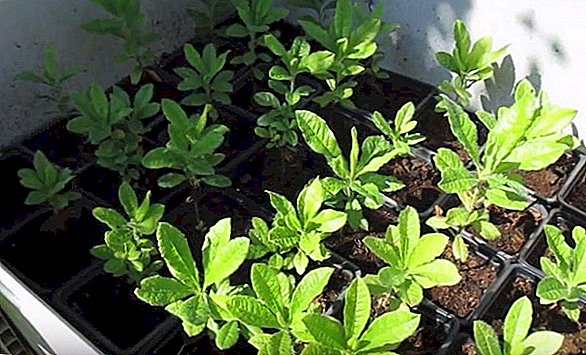
Did you know? The symbol of the state of Nepal is the red rhododendron. The garland of these flowers is depicted on the Nepalese coat of arms.
Care
The first top dressing of a plant is made in the spring, before the beginning of its flowering. For fertilizing it is recommended to use specialized fertilizers intended for rhododendrons. This may be, for example, "Azofoska" or "Rodo & Azalea Aset". Make them necessary according to the instructions.
The second dressing is carried out after the shrub ottsvetet, usually it is the end of May or the beginning of June. You can use fertilizers for perennial flowering plants, for example, Agricola or Kemira Universal. If desired, it is not difficult to independently prepare fertilizer. To do this, mix a tablespoon of potash salt, a tablespoon of superphosphate, two tablespoons of ammonium sulphate. This mixture is added to the near-stem circle of the shrub, the amount is enough for 1 square meter. meter.
The last feeding is carried out in late July. Preparing a solution of 2 tablespoons of phosphate and a tablespoon of potash salt in 10 liters of water. On one bush enough 3 liters of fertilizer. The soil around the bush mulch coniferous sawdust.
Important! The last fertilizer should not use nitrogen fertilizers to prevent excessive growth of rhododendrons.Video: how and what to feed rhododendrons Schlippenbach rhododendron is a moisture-loving plant, but it may not be able to carry stagnant water, this is eliminated by selecting a site for planting, there should be good drainage.
It also negatively affects the excessive drying of the soil, so you need to water regularly, the frequency of watering depends on weather conditions. To do this, use soft water, rainwater or river water is also suitable (if, of course, the reservoir is clean).
For the formation of a beautiful crown cropping is needed. This procedure is carried out after flowering shrubs. The second pruning is done before wintering.
Learn how to grow rhododendrons in Siberia, the Moscow region and the Leningrad region.
Preparing for the winter
This species is quite resistant to cold, it can withstand air temperatures up to -25 ° C and soil freezing to -9 ° C. However, he needs preparation for the winter. The space around the root collar is filled with sawdust in a layer of 15-20 cm.
So that they do not scatter from the wind, they can be pressed against the boards, slate, etc. It is also recommended to pull off the branches with a rope and wrap them with sacking. Shelter is removed after snow melts. Young shoots are pressed to the ground and covered with spruce branches. 
Find out what features are inherent in Adams rhododendrons, Ledebour, Dahuri.
Breeding
Rhododendron Schlippenbach can be propagated both by seed and vegetatively. Seed propagation has been described in detail above. Reproduction is also practiced by cuttings. Cuttings harvested after the end of flowering plants. Shoots 15 cm long are cut. They are planted in a container with the same substrate as is used for sowing seeds.
The cuttings are wrapped with a plastic wrap, which is removed when the cutting is rooted. Watering is done regularly, the substrate must be moistened. After rooting, the stalk is transferred to a separate pot. It can be planted in the open ground in the fall, before the onset of stable cold or in the spring, which is preferable.
In addition to grafting, reproduction is applied by air layering. To do this, after the shrub ottsvette, instill its lower branch, which is watered abundantly throughout the season. At the end of the season, if the branch is rooted, it is cut and transplanted to another location. 
Learn more about how to rid rhododendron from diseases and pests.azaleas
Diseases and pests
Like other deciduous species that prefer shade, the Schlippenbach rhododendron is more resistant to diseases and pests than its evergreen counterparts. With the right choice of planting place and proper care, this plant is weakly prone to such troubles. Below are a number of the most common diseases and pests.
- Tracheomycotic wilt caused by a fungus. In this disease, roots rot, brown leaves fall away. In the industrial cultivation of plants as a preventive measure, spraying the crown and watering the roots with a 0.2% solution of "Fundazole" is used. Sick plants are dug up and completely burned.
- Late blight is caused by a fungus. Often the disease provokes poor drainage of the root zone. Externally manifested in the fall of leaves, yellowing of branches, rotting wood. At the initial stage of the disease, the shrub can be cured by spraying it with Bordeaux liquid or its analogues. In the later stages, the plant is excavated and burned.
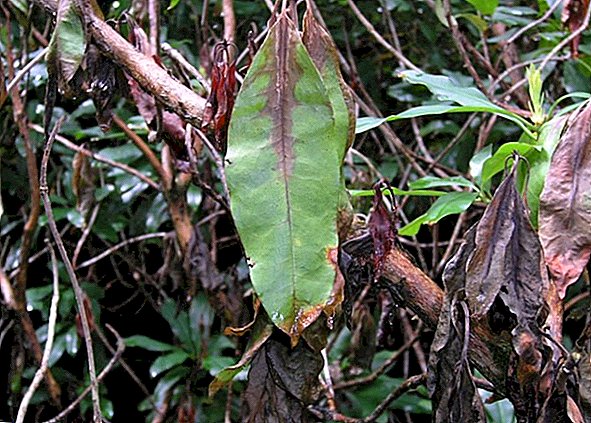
- Rhododendron mosaic. The causative agent is a mosaic virus that can be carried by insects. When the disease leaves the plant are affected mosaic yellow specks or green calluses. The growth of the bush stops at this, flowering becomes weak. To combat the disease, cut off the affected shoots or simply destroy the heavily affected plant.
- The common spider mite is hardly noticeable due to its tiny size. The leaves of the shrub, affected by mites, turn yellow and dry up. They fight with insecticides (Actellic).

- Acacia spatula is a small, wingless insect up to 6 mm long. Plants affected by it, weaken and gradually dry out. You can fight it by spraying the bushes with organophosphate compounds or insecticides ("Aktara").
- Tobacco thrips is a winged insect up to 1 mm long. Thrips damage the rhododendron buds, and also are carriers of viral diseases. Various insecticides (Fufanon, Karate Zeon) are used against them.
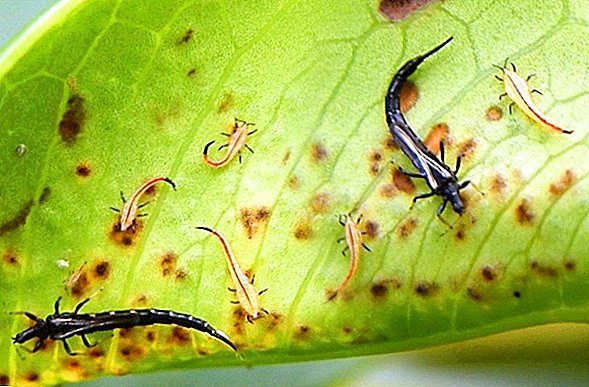
Rhododendrons are also called azaleas, find out how to grow azaleas at home.As you can see, it is not too troublesome to grow Rhododendron Slippenbach. Of great importance for its normal development is the correct choice of landing site, the presence of slightly acidic soil and watering with soft water. This shrub propagates in several ways, they are all quite simple. So you should try to plant this plant on your site - its flowers will become a real decoration of the garden.
Reviews of growing rhododendron Schlippbach
This is our Far Eastern view, never coveredPavel
//plodpitomnik.ru/forum/viewtopic.php?p=2335#p2335
So I planted my rhododendrons on January 2. Yesterday I decided that I had old seeds that could not ascend and went and bought another package at the Exhibition of Economic Achievements, poured it into the same bowl, and then read the recommendation on the package. Sowing the seeds: the seeds are soaked and put on the light under the film for 3-4 days, then buried to a depth of 0.5 - 1 cm in the soil mixture. Shoots in 1-2 weeks. And on the 4th day I was still filling up fresh ... beauty. Okay, after 4 days if the sprouts never appear, they will fall asleep half of them. Maybe something will come up ...jasper
//iplants.ru/forum/index.php?showtopic=20121&#entry253511











